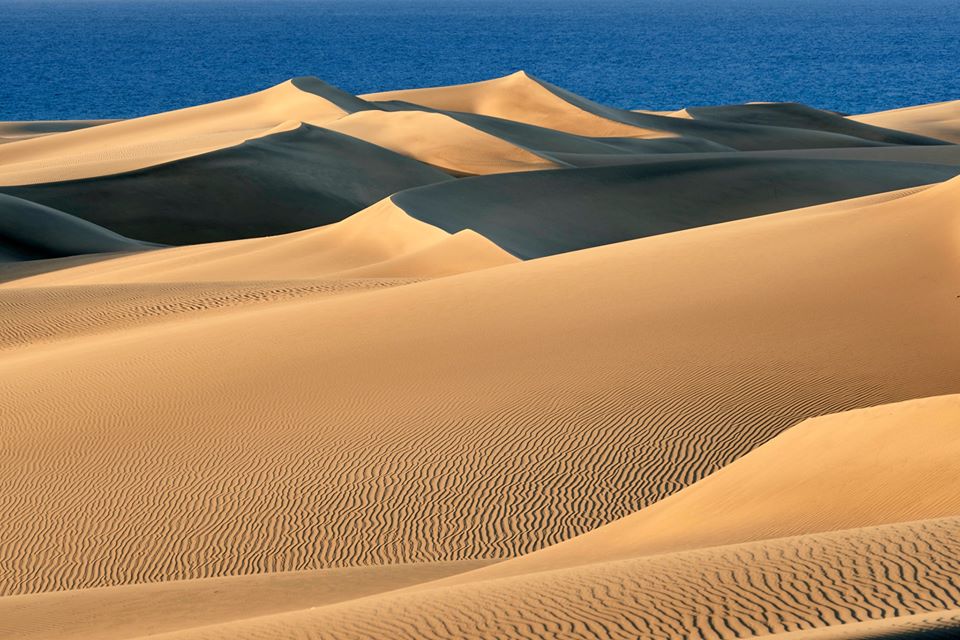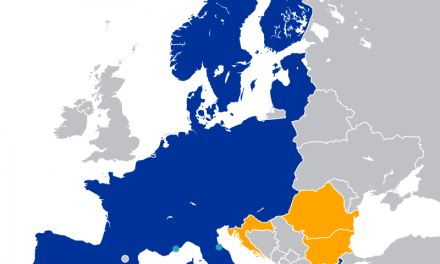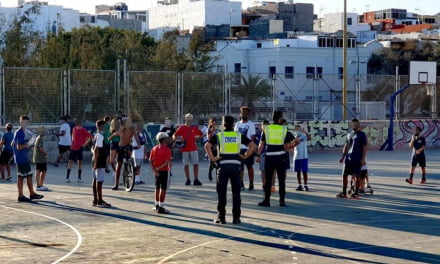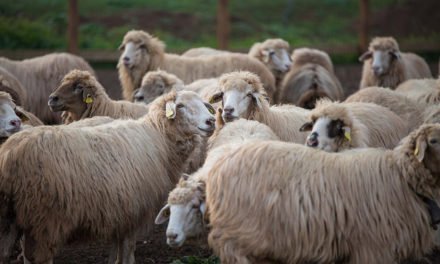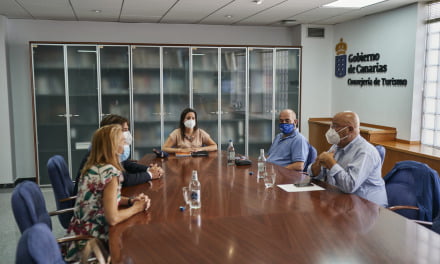 The so-called ‘lockdown’ confinement restrictions on the sunny subtropical island of Gran Canaria, coupled with #Tourism0, has had a very positive effect on the world famous Dunes of Maspalomas. There have been no passers-by or visitors which has resulted there no longer being any footprints visible and the unique landscape have recovered its natural “dreamy” sand dunes unseen in their virgin state for 50 years. It’s infinite undulations, reminiscent of the nearby Sahara dessert just 160km to the east, have returned to the south of Gran Canaria.
The so-called ‘lockdown’ confinement restrictions on the sunny subtropical island of Gran Canaria, coupled with #Tourism0, has had a very positive effect on the world famous Dunes of Maspalomas. There have been no passers-by or visitors which has resulted there no longer being any footprints visible and the unique landscape have recovered its natural “dreamy” sand dunes unseen in their virgin state for 50 years. It’s infinite undulations, reminiscent of the nearby Sahara dessert just 160km to the east, have returned to the south of Gran Canaria.
Coronavirus precautions, and the state of emergency, have had harsh consequences for the entire population, and many agree that they have been absolutely necessary to preserve the lives of the more than 800,000 people who live on the island. One wonderful benefit has been a recovery of essential ecological processes from across diverse environments, including flowering of beautiful natural endemic flora and the uninterrupted reproduction of spring birds taking advantage of the newly calmed environment. Miguel Ángel Peña, technical director of the Masdunas project, last week highlighted the fact that there seems to have been positive regenerative results at a higher pace than had previously expected.
Download More Information Here
SEDIMENTARY EROSION the building process has altered the dune dynamics, generating a process of sand loss. It’s estimated that 45.000 of sand are lost per year and that they end up at the 3 m bottom of the sea.
LOSS OF Traganum moquinii a significant part of individuals belonging to this species has been lost. This has favoured the disappearance of dunes and the formation of eroded zones.
ALTERATION OF THE LANDSCAPE and reduction of the public use: the alteration of rocks and vegetation due to the construction of wooden or stone structures where people take shelter (“goros”), the opening of new trails, littering and other irresponsible behaviour generate a negative impact on the local biota, the conservation of the space and the enjoyment of the rest of the visitors.
3 REINTRODUCTION OF 60.000 m OF SAND over the two years that the project will last. From Punta de la Bajeta, just before it gets lost by falling to the bottom of the sea, sand is collected and deposited along Playa del Inglés, so that it can join the sedimentary cycle.
INSTALLATION OF SAND-TRAPPING FENCES associated to Traganum moquinii individuals.
CONTROL OF INVASIVE ALIEN plant and animal species.
REMOVAL OF WOODEN SHELTERS (“GOROS”) from the reserve.
REPLACEMENT OF THE BEACONS at the original trails. SCIENTIFIC MONITORING of the project’s actions and of their real effects on the system.
TO CHECK THE EFFICIENCY OF THE MEASURES taken to replace the sand that is lost every year in order to be able to implement the method in successive years.
TO STUDY THE CAPACITY OF SAND-TRAPPING FENCES and associated Traganum moquinii plants to form dunes.
TO RECOVER THE Traganum moquinii population.
TO RECOVER THE LOCAL BIOTA BY CONTROLLING invasive alien species in the reserve.
TO IMPROVE the public use.
The marine currents deposit the sand on the shore, and once it has dried, the wind moves it inland. Later, plants such as the Traganum moquinii favor sand accumulation progressively until it forms a mound, the dune. This dune grows with the progressive increment of sand and the increase in plant height. Some sand also surrounds the plants and is deposited behind them (forming shadow dunes). The dune continues to advance until it is released from the plants forming big mobile dunes that advance to the Maspalomas beach.
MASPALOMAS DUNE SYSTEM DYNAMICS
The Maspalomas dune system presents a sedimentary cycle where the wind and the sea play a fundamental role. The sand enters the system through Playa del Inglés, where it is transported inland by the trade winds (NE). Once the free dunes have been formed, they advance in the E-W and NE-SW directions until they reach the sea through the Maspalomas beach. When storms with heavy SW wind occur, the Maspalomas beach is eroded and part of the sand is deposited in Punta de la Bajeta. Some of these sediments return to join this sedimentary cycle, while some fall to a depth that prevents it from entering this cycle again.
For your own safety and for the conservation of the natural environment, please walk only within the marked trails. The appropriate place to sunbathe, rest and perform other activities is the beach. It is not allowed to stay in the natural reserve and it can only be transited within the marked trails.
MASDUNAS PROJECT DESCRIPTION
 (masdunas.es) The MASDUNAS project is an experiment that was born with the aim of finding the appropriate formulas to diminish, as much as possible, the process of environmental degradation of the Maspalomas dunes. This process has been occurring during the last 50 years as a result of touristic development. Through this project the disappearance of the dune field predicted for the next century could be avoided, conserving its environmental value and its importance as a tourist attraction.
(masdunas.es) The MASDUNAS project is an experiment that was born with the aim of finding the appropriate formulas to diminish, as much as possible, the process of environmental degradation of the Maspalomas dunes. This process has been occurring during the last 50 years as a result of touristic development. Through this project the disappearance of the dune field predicted for the next century could be avoided, conserving its environmental value and its importance as a tourist attraction.
WHAT’S GOING ON?
 This has led to an increase in vegetation covering of the inland areas, as well as a decrease in areas occupied by mobile dunes and an increase in eroded areas (deflation surfaces). If this situation continues, the system could run out of sand in less than a century.
This has led to an increase in vegetation covering of the inland areas, as well as a decrease in areas occupied by mobile dunes and an increase in eroded areas (deflation surfaces). If this situation continues, the system could run out of sand in less than a century.
 LOSS OF BIODIVERSITY invasive alien species of animals and plants are displacing the local biota. This produces alterations in the functioning of the ecosystem and also produces a loss of the natural heritage.
LOSS OF BIODIVERSITY invasive alien species of animals and plants are displacing the local biota. This produces alterations in the functioning of the ecosystem and also produces a loss of the natural heritage.
 WHAT IS TO BE DONE?
WHAT IS TO BE DONE? WHAT RESULTS ARE EXPECTED?
WHAT RESULTS ARE EXPECTED? HOW IS A SAND DUNE BORN?
HOW IS A SAND DUNE BORN? WHAT CAN YOU DO?
WHAT CAN YOU DO?

